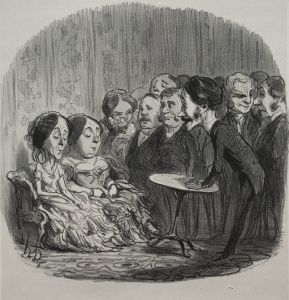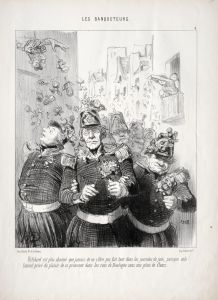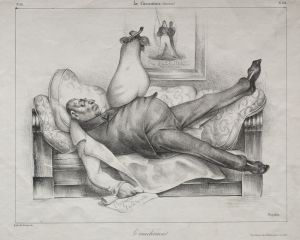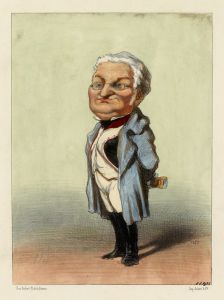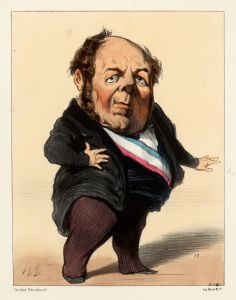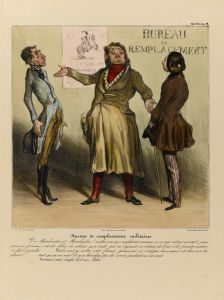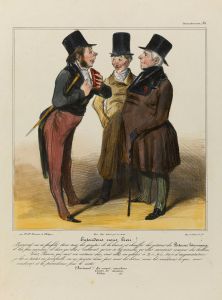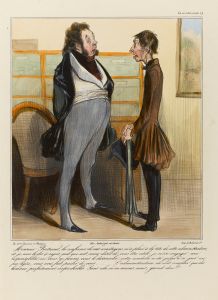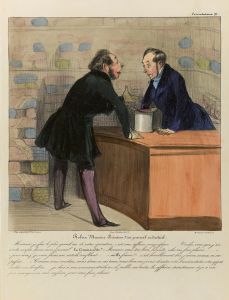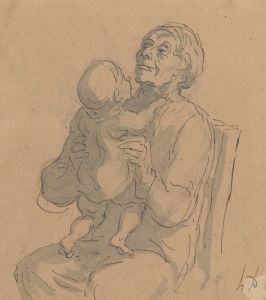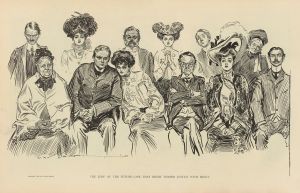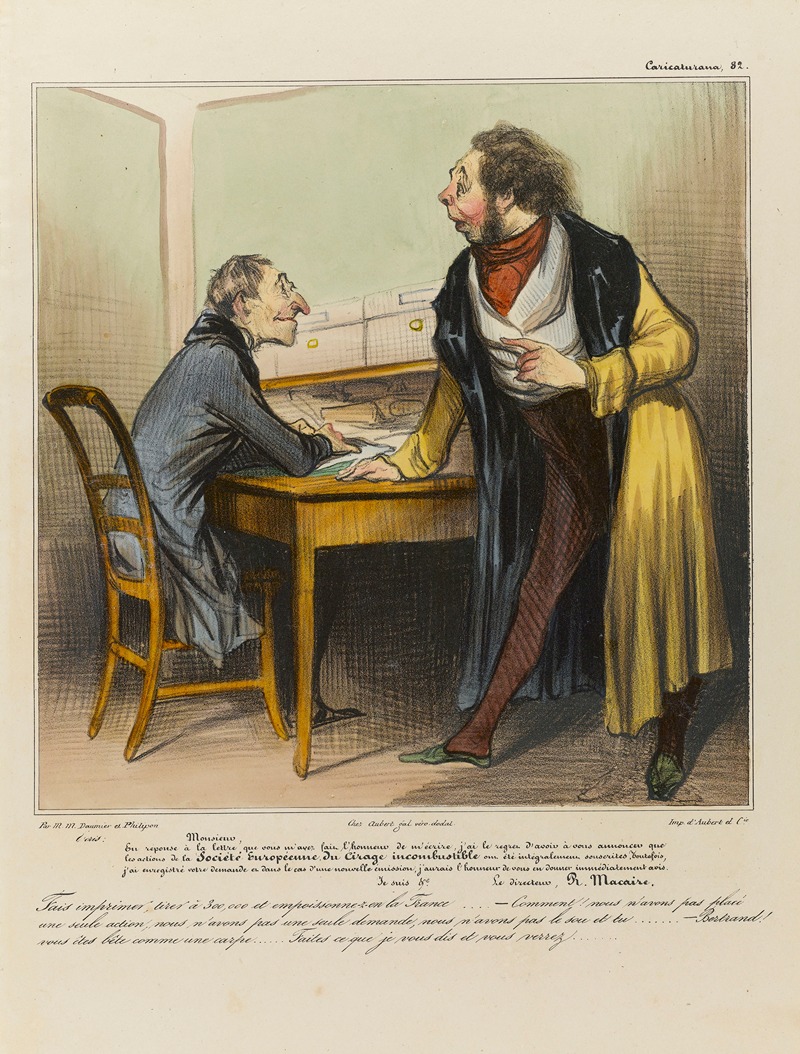
Ecris Monsieur, En réponse à la lettre que vous m’avez fait l’honneur de m’écrire, j’ai le regret d’avoir à vous annon
A hand-painted replica of Honoré Daumier’s masterpiece Ecris Monsieur, En réponse à la lettre que vous m’avez fait l’honneur de m’écrire, j’ai le regret d’avoir à vous annon, meticulously crafted by professional artists to capture the true essence of the original. Each piece is created with museum-quality canvas and rare mineral pigments, carefully painted by experienced artists with delicate brushstrokes and rich, layered colors to perfectly recreate the texture of the original artwork. Unlike machine-printed reproductions, this hand-painted version brings the painting to life, infused with the artist’s emotions and skill in every stroke. Whether for personal collection or home decoration, it instantly elevates the artistic atmosphere of any space.
Honoré Daumier, a prominent French printmaker, caricaturist, painter, and sculptor, created the painting "Ecris Monsieur, En réponse à la lettre que vous m’avez fait l’honneur de m’écrire, j’ai le regret d’avoir à vous annon…" during the 19th century. Daumier is best known for his satirical works that critiqued the social and political life of France during his time.
The title of the painting, which translates to "Write, Sir, In response to the letter you have honored me with, I regret to have to announce to you…" suggests a scene involving a formal letter-writing process. This aligns with Daumier's frequent exploration of the bureaucratic and legal systems, often highlighting the absurdities and injustices within them.
Daumier's work is characterized by its expressive use of line and form, and this painting is no exception. The figures in the painting are rendered with a keen attention to detail, capturing the nuances of their expressions and postures. This attention to human emotion and interaction is a hallmark of Daumier's style, which often blends realism with a touch of caricature to emphasize the underlying themes of his work.
The painting likely depicts a moment of communication, possibly within a legal or bureaucratic context, given Daumier's known interest in such subjects. The setting and the characters' attire suggest a middle-class environment, which was a common focus in Daumier's critique of contemporary society. His works often reflect the struggles and absurdities faced by ordinary people in their interactions with authority figures and institutions.
Daumier's contributions to art extend beyond painting; he was also a prolific lithographer and caricaturist. His satirical prints were widely published in newspapers and journals, making him a well-known figure in the world of political and social commentary. His ability to capture the essence of his subjects with both humor and empathy has earned him a lasting place in the history of art.
"Ecris Monsieur, En réponse à la lettre que vous m’avez fait l’honneur de m’écrire, j’ai le regret d’avoir à vous annon…" is a testament to Daumier's skill in portraying the complexities of human interaction and the often ridiculous nature of societal structures. Through his art, Daumier invites viewers to reflect on the world around them and consider the deeper implications of everyday scenes.
Daumier's legacy is preserved in numerous collections around the world, including major museums such as the Louvre in Paris and the Metropolitan Museum of Art in New York. His work continues to be studied and appreciated for its artistic merit and its incisive commentary on 19th-century French society.






